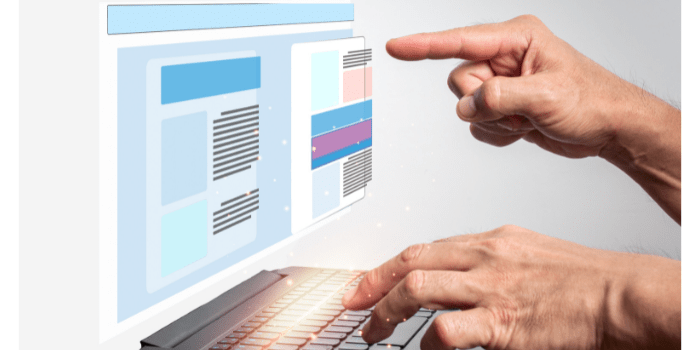Every business needs to implement a digital transformation, and sooner is better than later. We recommend looking into robotic process automation, RPA for short, as a potential tool. Many businesses are using new technologies to handle the high volume of work expected from them, especially in financials and healthcare. Managers need to use every available tool to become efficient and upgrade outdated legacy systems and time-consuming processes.
The numbers show that RPA will keep growing and improve its services to businesses. In 2019, Gartner noted that the market grew by 63.81 percent in 2018 and projected that it would reach a revenue of $1.3 billion in US dollars. Forrester believes that by 2021, the RPA market will grow up to 2.9 billion. It is another tool to add to your arsenal in reducing the time spent on tasks so that your internal users can focus on completing work for clients or delivering products to them.
What is Robotic Process Automation?
Robotic process automation is using programmed software to handle tasks within a business. The software is usually a bot that works on a specific task, one that requires no emotional intelligence or such. This bot is generally assigned to handle a task that is labor-intensive and highly repetitive. If the firm starts seeing benefits from using the specific RPA, then they may assign it to complete more tasks.
As mentioned, the RPA market is growing. Currently, the tasks used are those that a human can achieve with easy-to-learn skills and little emotional labor. That may change in the future when technology advances with new AI and Deep Learning algorithms.
Businesses have used RPA to handle data entry. Data entry is incorporating knowledge and crucial information from a series of sources, which have different formats. Some are information that needs to be copied from one system to another one, others are editable text files or pdf, as one example. A human data entry professional may find it time-consuming to translate all of these fonts at once. If you have a bot going through the information, it can handle the various formats and put the metrics and data under a single, readable format.
Customer service is another useful place to have RPA. Everyone has the experience of making a phone call, waiting on hold for hours, and getting endlessly transferred. This can happen even when you are simply making a doctor’s appointment. There is also a high risk for human error in customer service, especially since human representatives work on regulated hours and are expected to solve problems in a matter of business. If you have bots to assist, then the phone calls and inquiries can reach the right human representative, in the proper department.
4 Key Benefits of Implementing RPA in your Digital Transformation Strategy
First, RPA reduces the costs involved with running a business. Instead of paying for an employee or giving a group of interns college credit to handle tedious processes, you can have the bots handle the smaller tasks and give your workers more time to focus on clients and output. This also gives them more time to learn complicated skills and build on their repertoire. Thus, it benefits both your business and employees. RPA also makes the workday more efficient.
Second, there are zero risks of human error. While skilled employees are great to have, it is very easy to make mistakes on mundane tasks such as entering data or processing invoices. Tedious minds can overlook simple errors that can snowball into big ones. RPAs as bots will always perform the task consistently because they don’t get exhausted, and a workday routine won’t affect their performance.
Third, you can get solid metrics on how work tasks go and the firm’s overall performance. With people, they would have to manually enter the data or rely on a digital tracker to have those same numbers. RPAs as bots automatically log their performance, and the numbers can be used in analytics easily.
Fourth, a business has more scalability with an RPA. By this, we mean that a business can grow at a reasonable rate so that the subsequent costs don’t harm profit. When you determine how many tasks that one bot can handle, then you can figure out how many of them are needed within your business.
When is Robotic Process Automation Not Enough?
RPA helps you with the necessary yet tedious tasks that go into running a business. The problem is that a process determines how you use an RPA. In addition, the capacities of RPA are quite low at the moment in terms of the workload they can handle.
Tasks and processes are not the same; the former contributes to the latter as a cohesive whole. Consider how Human resources conducts onboarding with new hires. Within onboarding, several tasks need to happen: send out an acceptance letter, file paperwork for benefits and tax purposes, set up a workspace, and create login credentials. RPA can handle these tasks individually but not as a whole.
The solution is to combine RPA bots with Digital Process Automation software (DPA). Digital Process Automation uses software to handle tedious and time-consuming processes, often refining them to increase efficiency. It can provide the direction by which to direct the RPA bots and help them prioritize the tasks to complete.
DPA cannot replace human labor fully but is the perfect technology to streamline the process giving a simple interface where employees and managers can handle approval steps and decisions. DPA is focused on end-to-end automation of the process. Automation doesn’t mean human replacement necessary. RPA is the complement that helps by handling repetitive tasks, ensuring that they are completed. That’s why you need both for digital transformation.
Strengthen Your Digital Processes With Virtus Flow
When you want improvements to digital transformation, then you want to go with a company that knows process automation. At Virtus Flow, we implement virtual workflows to streamline your business. Reduce unnecessary time spent on processes and let the software decide how best to manage them.
Reach out to us today to schedule your first demo. Virtus Flow can take the mundanity out of your tasks and make you highly competitive. We’ll give you the knowledge of how best to marry RPA with DPA so that you can go beyond legacy systems. Introduce digital transformation initiatives with a purpose, that helps your business become highly productive.




